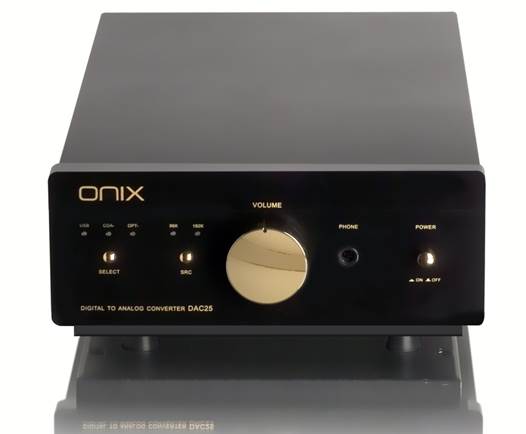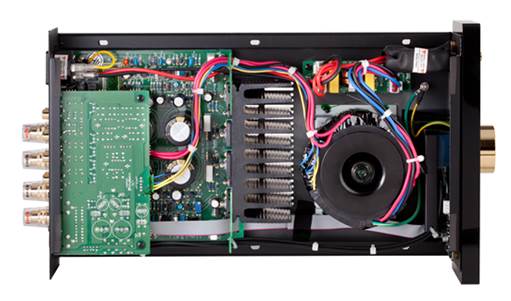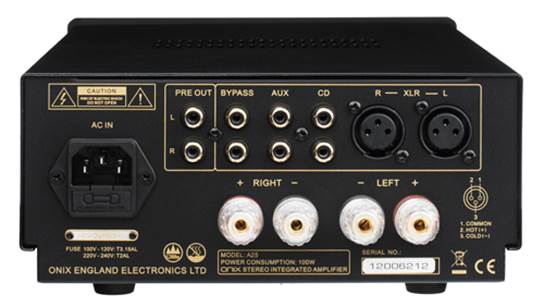Naim Nait 5i
Price: $1,877
Naim’s Nait 5i has remained essentially
untouched for close to six years, making it the veteran here. But as the saying
goes, if it isn’t broke don’t fix it, and the Nait 5i is certainly testament to
that.
Although it’s one of the pricey amps on
test, it is the entry-level option for Naim and comes with some somewhat
entry-level features to match. Unlike more generous amps from Arcam or Pioneer,
you’ll only get four analogue inputs, a single pair of speaker’s outputs and,
uniquely, two DIN inputs as well.
Those in hope of more inputs or a phonon
stage for a turntable, for example, will need an outboard unit, but would do
well to listen to the Nait 5i first before dismissing it on this basis alone.

Naim
Nait 5i
The simple front panel distinguishes the 5i
from many more fussy-looking amps on the market, with the Naim logo taking
pride of place in the center, a 3.5mm headphone jack, and four source buttons
on the right (complete with green LED light to show which is selected), and a
volume dial, placed rather unusually (for right-handers at least) on the left.
It’s a solid, well-built amp, and the design really appeals.
The 5i retrieves the subtlest details
and shows off changes of tempo with real confidence. It’s this refinement,
dynamism and transparency that make it great for long listening sessions
Punch and dynamics abound A listen to Lady
Gaga’s Paparazzi is enough to demonstrate the pure weight that lies behind this
amp. It’s a solid, assured sound that packs a punch in the low frequencies, and
reaches high up into the treble, relaying the high synth notes with clarity and
poise.
Vocals are handled with importance and
pushed to the forefront with impressive transparency, though the Nait 5i is
overall a more forward sounding amp than the likes of the laid-back Arcam
anyway. While this presentation creates a less spacious sound, it emphasizes
the 5i’s excellent timing, keeping records on their toes and oozing excitement.

The
Naim combines punch and dynamism with lovely refinement – it’s a winning
formula
The 5i’s dynamic skill is another strong
point, retrieving and relaying even the subtlest details and showing off
changes of tempo with a real confidence – no matter what genre you throw at it.
It’s this combination of refinement,
flexibility, dynamism and transparency that makes the Nait 5i such a great
companion for long listening sessions. Its large sound belies its stated power
rating of 50W per channel, and its outstanding ability to change its character
to suit the material shows just what your extra cash will get you.
Whether it’s attacking a bass-heavy track
or portraying the sweeter side to a potentially harsh-sounding violin solo, the
Nait 5i is an enthusiastic performer and arguably the best sounding amp on
test.
Of
course there is that high price tag to contend with, but if you’ve got a budget
towards the top end of this test’s price range, this is an amp that should
certainly be on your shortlist.
The
Nait 5i is an enthusiastic performer and arguably the best sounding amp on test
Make sure you run in it
Some products only need overnight for them
to their best when fresh This Naim, though, required far longer – a couple of
weeks, in fact – so take this into account when demoing.
Rating: 5/5
For: Dynamically strong; excellent bass
control; good rhythm; detailed sound
Against: A little lacking on the spec
sheet; not the most spacious presentation
Verdict: A strong all-round performer at
the top end of the price range
Naim Nait 5i specs
·
Type: Integrated
·
Power: 50W
·
Tuner: No
·
Inputs: Line level x 4
·
Outputs: Speakers
·
Phonon stage: No
·
Tape Loops: 1
·
Tone Controls: No
·
Remote Control: Yes
·
Finishes: 1
·
Dimensions (H x W x D): 7 x 44 x 31cm
Onix A-25
Price: $1,795
We’ve not heard much from Onix in recent
years. Once a British hi-fi brand, born in the homes of a duo from Brighton in
the late 1970s, it’s had pockets of success ever since before going quiet for
extended periods of time.
Now in the hands of an overseas investor
with a European distributor, Onix is back with the A-25 integrated amplifier –
created to mark the 30th anniversary of the brand’s classic OA-21 amplifier.

Onix
A-25
Taking on the distinctive, but minimalist
design for which Onix’s early high-end models were known, it certainly stands
out from the rest of the amps on test here. As such, it’s bound to be a
love-it-or-hate-it design for most… and we happen to love it.
Like the Cyrus 6a (earlier in this test),
the Onix takes on a relatively unusual half-width design (something Onix says
it did first), with a solid, metal constructed chassis and a black high-gloss
front panel.
This amp strengths lie in its
midrange, treble and a commendable handling of dynamics – lingering notes let
you follow every layer as they fade into silence. It’s a really finessed sound
The large gold volume dial sits in the
middle of this panel, with a gold power button on the right and a mode-select
button on the left. Above it, you’ll find a blue LED underneath whichever
source is selected. And that’s it.
Stripped down design (and sound)
A similarly simple approach occurs round
the back, with just three line inputs at 30W per channel (including one
balanced XLR input), pre outs and a bypass input for sidestepping the volume
controls when using it as a power amp in an AV setup.
And in a bid to keep things really simple,
there isn’t even a remote control (Although if you’re loath to
get out of your seat, there’s a version of the A-25 that works with its own
proprietary remote - yours for an extra $90).
Get the Onix up and running with a play
through of Kate Bush’s This Woman’s Worth from Director’s cut and it’s
immediately obvious that this amp’s strengths lie in its midrange and treble.
The keyboard introduction has a sweetness to it that’s almost palpable, and
brims with detail. The reverb effect on the notes is conveyed with a
commendable handling of dynamics too, allowing you to follow every layer of the
lingering notes as they fade into silence.

The
Onix favors refinement over bass punch, so bear that in mind when demoing
When it comes to bass, though, it’s easy to
hear where the A-25 falls down. With all that concentration on the mids and
treble, it seems to neglect the lower frequencies, leaving it feeling a little
lightweight and ultimately lacking wallop, to use the technical term.
Overall this creates a leaner, more
delicate sound than the amps with more heft behind them, such as the Pioneer
A-70 (next) or Naim Nait 5i (previous).
However, for listeners who value subtlety
over muscle, the Onix A-25 is certainly an amp to consider. Place it in the
right system and it will really shine.

Onix
A-25 is certainly an amp to consider. Place it in the right system and it will
really shine.
Remote control optional
There are two versions of this amp. The one
here is a get-up-and-twist-the-knob model – you can’t use any remote control
with it at all. For $90 more, though, Onix produces a couch-potato version with
a wand. We want.
Rating: 4/5
For: Strong midrange; sweet treble;
delicate handling of dynamics; good separation
Against: Lightweight in the lower
frequencies; leaner overall sound
Verdict: A little lean in the bass, but a
good choice for those who value finesse over muscle
Onix A-25 specs
·
Type: Integrated
·
Power: 30W
·
Tuner: No
·
Inputs: Line level x 3
·
Outputs: Preamp, speakers
·
Phonon stage: No
·
Tape Loops: No
·
Tone Controls: Yes
·
Remote Control: Optional
·
Finishes: 1
·
Dimensions (H x W x D): 9 x 20.5 x 35.5cm